Happy Tuesday, friends! As always, I enjoyed reading your insights into the weekend reading links.
Last summer, I published a post called 15 Simple, Affordable, and Protein Rich Combinations of Plant Foods. The goal was to break down protein requirements and recommendations using real food examples. Many of us have read about the recommended daily allowances for major nutrients, but it can be tough to translate that information into real life advice that matches our daily eating patterns.
Today, as a follow up, I want to offer you 15 simple, affordable, and calcium rich vegan food combinations—and in the future, I’d love to continue the series with other nutrients as well.
Calcium is one of the more important nutrients for vegans to have on their radars, for reasons I’ll expand on in a moment. Most vegans have a general sense of what the best plant-based sources of calcium are (leafy greens and crucifers), but even so, it can helpful to parse through some of the details.
I was in my early twenties, recovering from my last anorexia relapse, when a bone scan indicated that I had osteopenia, or low bone density. Mine was so low, in fact, that the diagnosis had nearly been one of osteoporosis. My endocrinologist explained that, under an x-ray, that my bones looked like those of a woman at least twice my age.
There’s a moment like this, I think, in the life cycle of any eating disorder. It’s the moment when you realize that the experience hasn’t merely been a set of abstract rules or an elaborate game you were playing with yourself. There had been many telltale health warning signs along the way—seeing stars when I stood up too quickly, the absent periods, the constant cold. But this was my wakeup call.
Luckily for me, the body forgives. It can be a challenge to compensate for bone density that was lost in the teens and twenties, since these are the formative decades for bone building. Significant losses in these years can put a person at higher risk for osteopenia or osteoporosis later in life. Still, one can work to build or maintain bone strength at any point in the life cycle, and I’ve spent the decade since my osteopenia diagnosis paying close attention to calcium in my diet and bone health overall. It’s something I become more and more vigilant about as I get older, since I know that preserving bone density is an important part of healthy aging.
While I have special reason to be vigilant about my bones because of personal history, bone health is a topic of concern for all women at every stage of the life cycle. Both men and women develop osteopenia and osteoporosis, but hormonal flux, longer life span, lower average calcium intakes, and having lower bone bone mass in the first place make women more susceptible.
As I said, the teens and twenties are the most critical years for forming strong bones (which is why eating disorders in young adults can have such serious consequences). About 40% of bone mass is built during adolescence, and by the late twenties and early thirties, peak bone mass is achieved [1]. Bone losses begin in the mid or late thirties and continue in the forties and fifties; for women, changes in estrogen levels after menopause can cause sharp declines, since estrogen helps to regulate bone turnover [2, 3]. A woman can work to maintain her bone density throughout the years by paying attention to calcium and vitamin D intake, staying active, eating a balanced diet that includes plenty of fruits and vegetables, avoiding smoking, and limiting alcohol [4].
Calcium, along with Vitamin D, is the major nutrient associated with strong bone health. Vegan diets deliver calcium through dark leafy greens, cruciferous vegetables, some legumes, and fortified foods. A well planned, nutritionally adequate, and varied vegan diet will meet a person’s calcium needs, and in fact, we absorb the calcium in greens better than we do the calcium in cow’s milk [5].
Still, it’s important for vegans to get clear and evidence-based information about calcium and how best to source it within a plant-based diet. Some research has suggested that vegans are at a higher risk of bone fracture than non-vegans [6, 7]. A close look at the studies, though, suggests that the higher fracture risk probably wasn’t due to veganism, per se (i.e., the absence of animal foods), but rather the fact that the individuals studied weren’t getting enough calcium their diets overall.
In other words, vegans don’t have to be at greater risk for bone thinning or fractures. But they may, for various reasons, skimp on calcium in their diets, which will make them as susceptible to low bone density as anyone consuming a low calcium diet would be. Vegan diets aren’t associated with a higher fracture risk if the amount of calcium consumed is adequate. [8]
Why would vegans get less calcium than omnivores? One factor might be the circulation of certain misconceptions about calcium and bone health within the vegan community. The most notable of these is the idea that vegans have special protection against bone loss because our diets are more alkaline than standard American diets. Some older studies suggested that more acid-forming diets could lead to bone resorption (loss of calcium from the bone matrix), but the latest research doesn’t draw the same conclusions. Instead, it suggests that the relative acidity or alkalinity of one’s diet has an insignificant impact on bone health [9]. Eating an alkaline diet is no guarantee of bone protection.
Meanwhile, many vegans believe that protein is acid-forming, and therefore bad for bone health, when in fact the opposite is true: protein seems to have a protective effect on the bone matrix [10, 11, 12, 13]. Ensuring adequate protein in the diet is an important part of eating for strong and healthy bones.
In my work, I see that some vegans don’t have a clear sense of what the best vegan sources of calcium are. For example, many new clients assure me that they’re getting enough calcium because they’re eating a lot of salad and baby spinach. But salad greens and spinach actually aren’t very good calcium sources, and spinach in particular is high in oxalates, which can block the absorption of calcium in food.
The leafy greens that deliver the most calcium include collards, mustard and turnip greens, kale, and bok choy. These greens might sneak into salads, but they often don’t. In order to maximize calcium intake, it’s important for plant based eaters to get a wide array of leafy greens and crucifers in their diets.
Some vegans also seem to be a little squeamish about the idea of eating fortified foods, like fortified non-dairy milk, orange juice, tofu, or cereal. One reason might be that we spend so much time defending our diets against uninformed criticism that we don’t like the idea of having to rely on nutrient sources that aren’t a “natural” part of the plant kingdom.
But vegans shouldn’t feel any special pressure to avoid fortified food. Fortification plays an important role in many peoples’ diets—vegans and omnivores alike. Most people get Vitamin D through fortification; cow’s milk is fortified with it, just the way plant milk is. Most whole grain products and cereal foods are fortified with folate, which helps to protect against neural tube defects.
Fortified foods exist in order to offer us a little extra insurance when it comes to healthful eating. We don’t need them in order to be healthy, but there’s no reason to avoid them if they’ll help to make nutrient acquisition easier. (This is especially true for parents who are feeding picky eaters.) One or two servings of fortified foods daily can go a very long way in helping a person to meet his or her calcium needs, and these foods also typically include Vitamin D.
Speaking of that, Vitamin D goes hand-in-hand with calcium in helping to maintain bone mass. Recently, I wrote a blog post inspired by the story of a client who hadn’t had Vitamin D on her radar, and found out about its importance the hard way—by learning she was deficient. This is a really common scenario nowadays, and not only among vegans. Vitamin D is activated by sunlight exposure, which many of us lack due to lifestyle or climate. Vitamin D supplementation may be necessary for folks who can’t ensure adequate sunlight or who have lot absorption of the vitamin. But fortified foods can definitely serve as one source of Vitamin D in the diet.
So, what’s the best way for vegans to ensure that their diets are working in favor of good bone health?
First, it’s good to be aware of the recommended daily allowance. The latest recommendation is 1,000 milligrams of calcium daily for women aged 19-50 and 1,200 milligrams daily for women over 50. The RDA for growing kids and teens (ages 9-18) is 1,300 milligrams daily. [14] This recommendation is offered under the assumption that we’ll absorb about 30% of the calcium we consume in food (about 300 milligrams daily).
That’s how much calcium you should be aiming for in your diet. But what’s the best way to source it? Whenever I share a recommended dietary allowance with a client, I’m sure to explain the recommendation through food, because the numbers in and of themselves can feel a little empty.
Let’s start by looking at the best plant-based calcium sources. I’m listing them in descending order of calcium density, and I’m giving both the milligrams calcium per serving, and also how far each food takes you toward 100% of your RDA. Keep in mind that some estimates vary for these foods (especially for different brands of calcium fortified foods), so the actual calcium content might be a little higher or lower.
1. Fortified almond, soy, or rice milk, 8 ounces: 300-500mg (30-50%)
2. Fortified orange juice, 8 ounces: 350 mg (35%)
3. Collard greens, cooked, 1 cup: 270 mg (27%)
4. Fortified breakfast cereal, 1 cup dry: 250-1000 mg (25-100%)
5. Turnip greens, steamed or boiled, 1 cup: 200 mg (20%)
6. Mustard greens, steamed or boiled, 1 cup: 160 mg (16%)
7. Bok choy, steamed or boiled, 1 cup: 150 mg (15%)
8. Tempeh, 4 ounces: 120 mg (12%)
9. Tahini, 2 tablespoons: 120 mg (12%)
10. Dried figs, 1/2 cup: 120 mg (12%)
11. Extra Firm Tofu, 3 ounces: 100 mg – 150 mg (10-15%)
12. Oats, instant, 1 serving: 100 mg (10%)
13. Kale, steamed or boiled, 1 cup: 100 mg (10%)
14. Shelled edamame, steamed, 1 cup: 100 mg (10%)
15. Silken tofu, 3 ounces: 80 mg (8%)
16. Blackstrap molasses, 1 tablespoon: 80 mg (8%)
17. Almond butter, 2 tablespoons: 80 mg (8%)
18. Almonds, 1 ounce: 80 mg (8%)
19. Orange, 1 cup sections: 70 mg (7%)
20. Navy beans, cooked, ½ cup: 65 mg (6.5%)
21. Broccoli, steamed or boiled, 1 cup: 60 mg (6%)
22. Pinto beans, cooked, ½ cup: 50 mg (5%)
What about calcium supplements? For certain individuals, a low dose supplement might be necessary or helpful in meeting calcium requirements. Still, most dietitians agree that food sources are best for calcium, and recent research has called into question whether or not calcium supplementation might pose risks to heart health. It’s best to meet the RDA through food if you can.
Now you know what some of the best individual food sources are. But we meet our requirements for a certain nutrient by eating real meals—which is to say, mixing and matching different foods throughout the course of each day.
So, here are 15 simple, affordable, calcium-rich combinations of plant food—and for each, a couple suggestions on how you could prepare them in your kitchen!
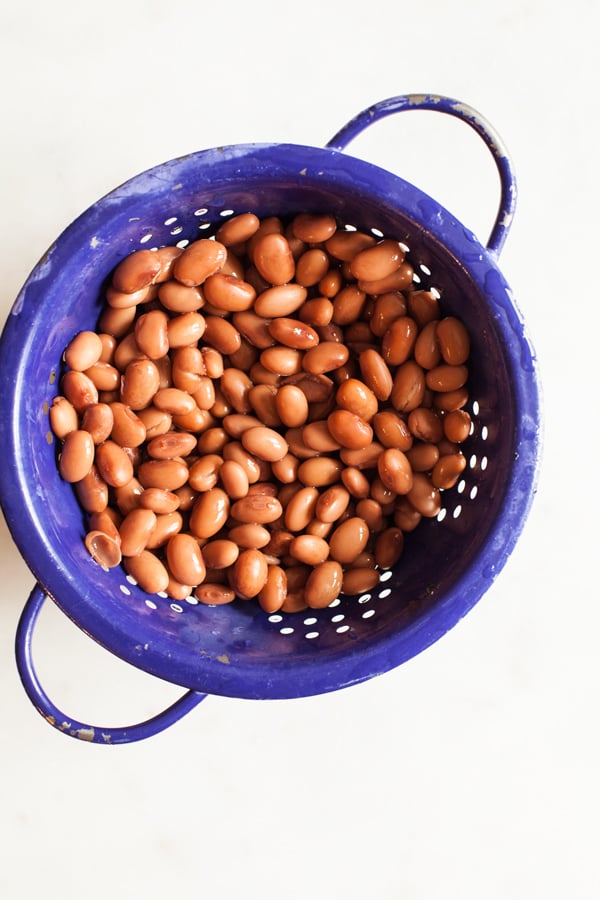
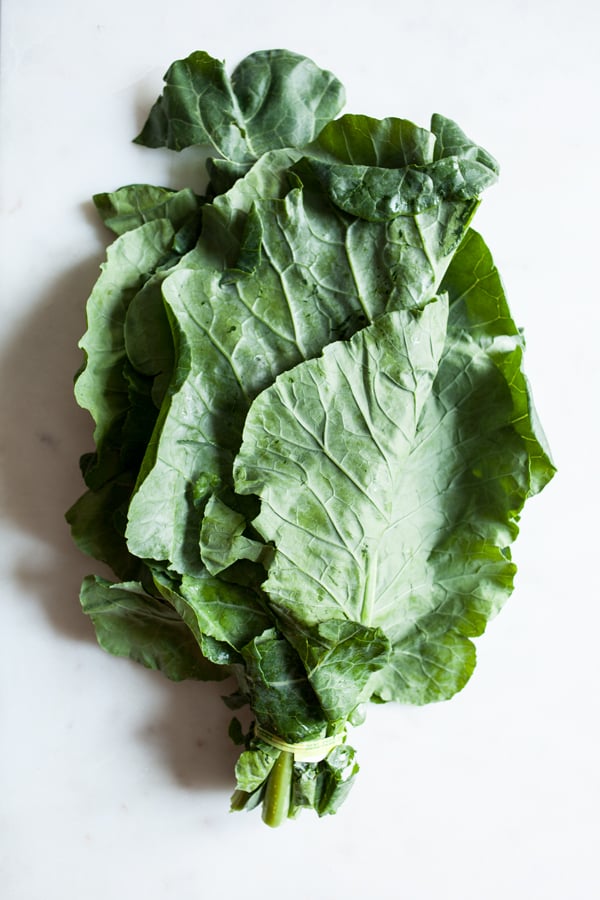
Pinto beans (5%) + collard greens (27%) = 32% RDA
Simmer the beans and greens in a simple soup or stew. Or, try combining these ingredients into an easy skillet dinner.


Dried figs (12%) + almonds (8%) = 20% RDA
You can enjoy these two as a snack, paired together on top of oatmeal or porridge, or processed into a homemade raw snack bar!
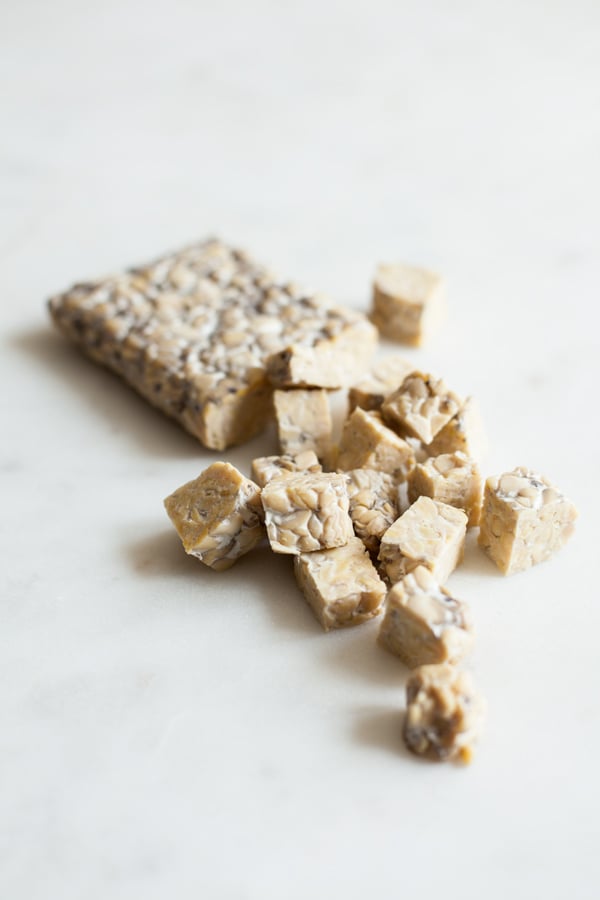
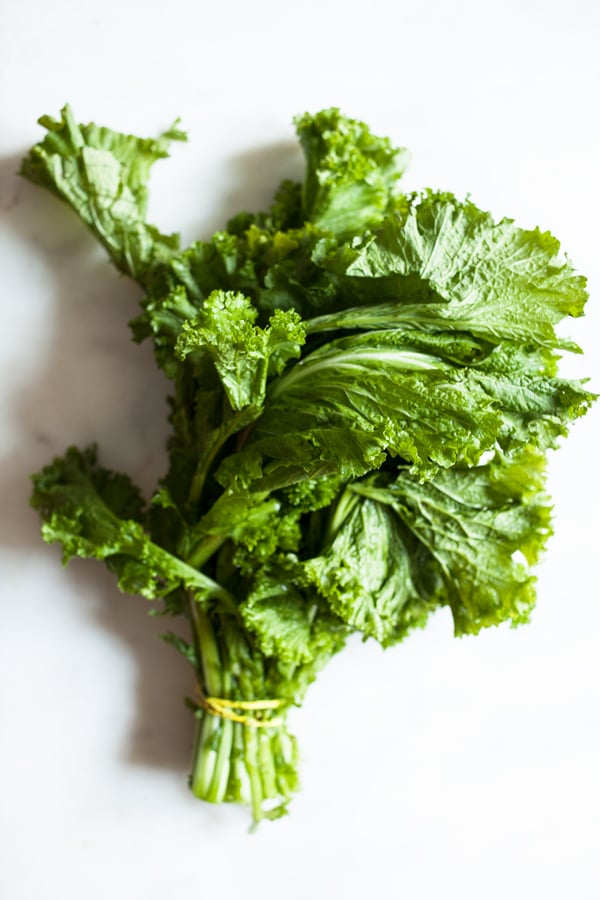
Tempeh (12%) + mustard greens (16%) = 28%
Combine these two in an easy skillet dinner and serve it over some brown rice. Or, make an open faced tempeh sandwich, top it with mustard greens, and smother it with some sort of delicious sauce.
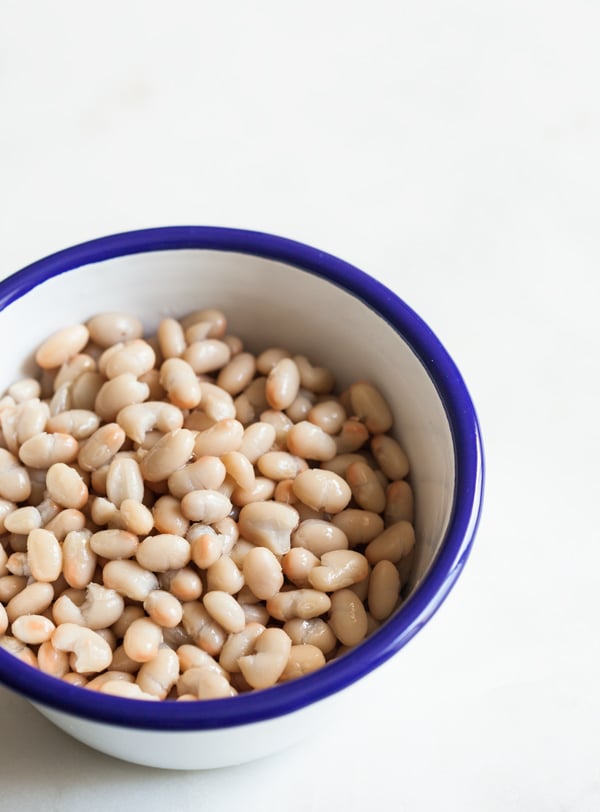
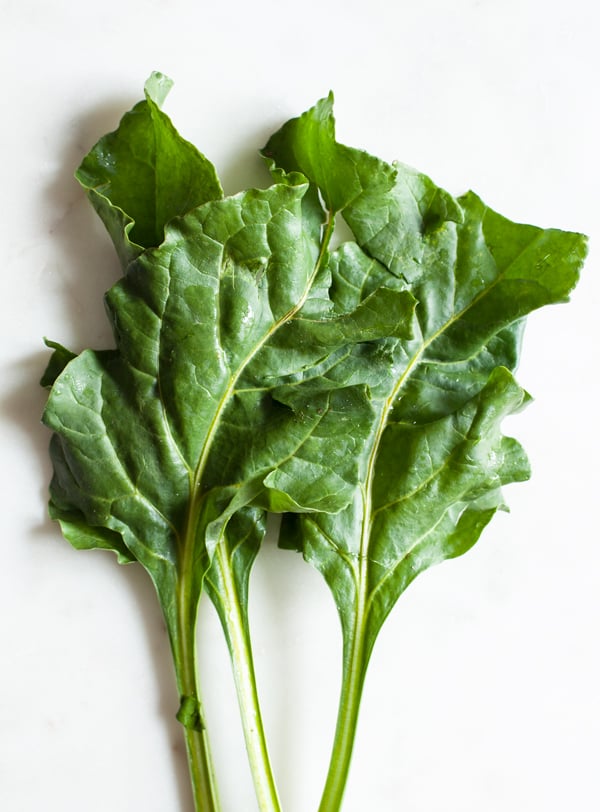
Navy beans (6.5%) + turnip greens (20%) = 26.5%
Create a soup with navy beans, greens, and garlicky broth. Or, try making a navy bean hummus, then using it to top a delicious green and grain bowl.
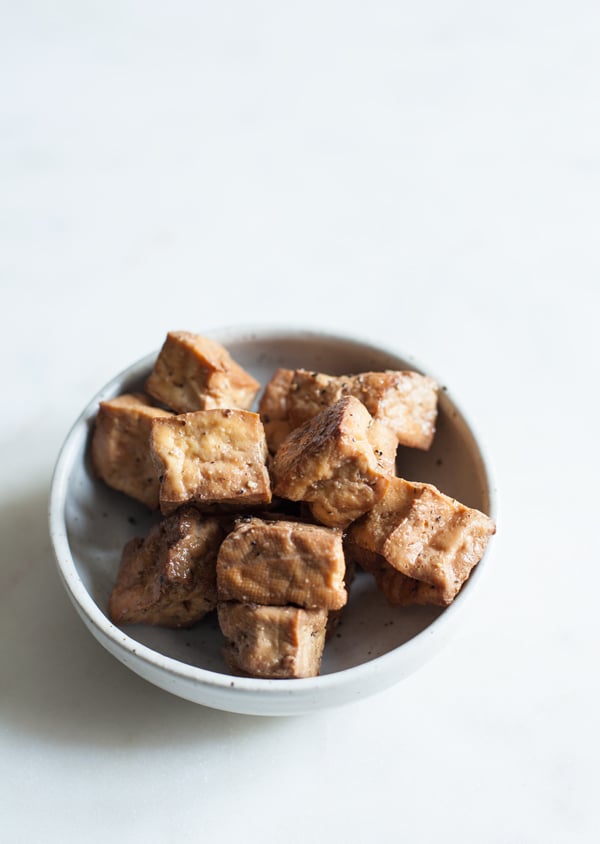
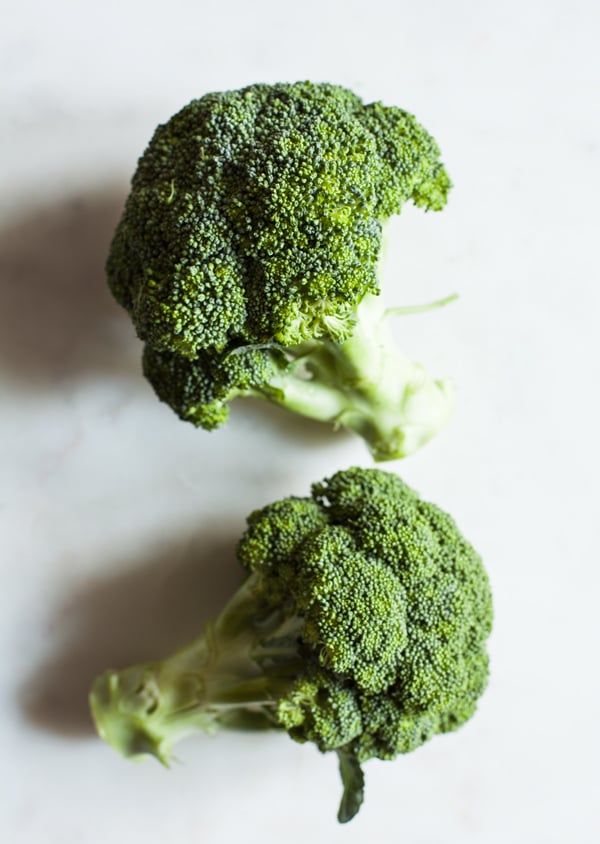
Tofu (15%) + broccoli (6%) = 21%
Make an easy dinner stir fry, create a bowl meal (sort of like this one), or create a tofu scramble with broccoli florets for breakfast.
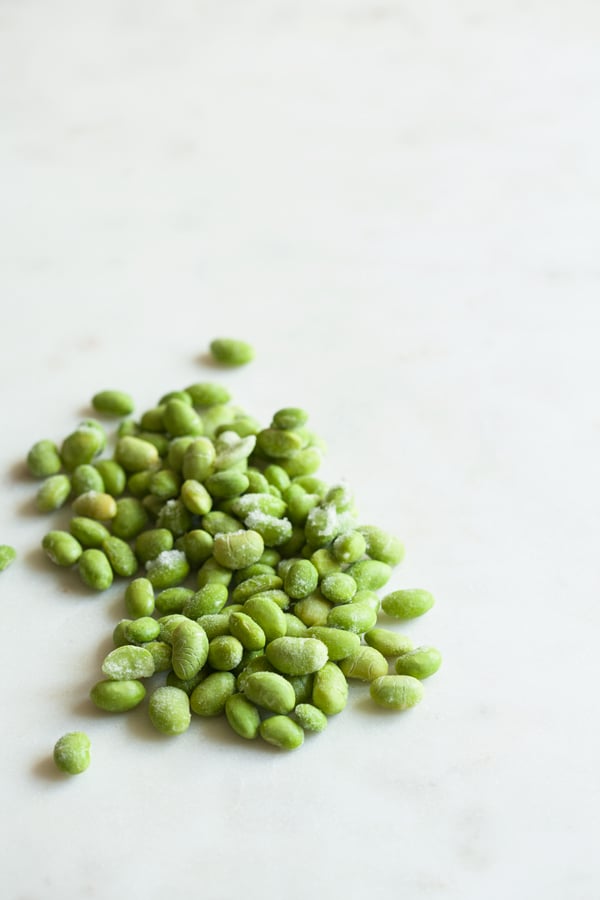
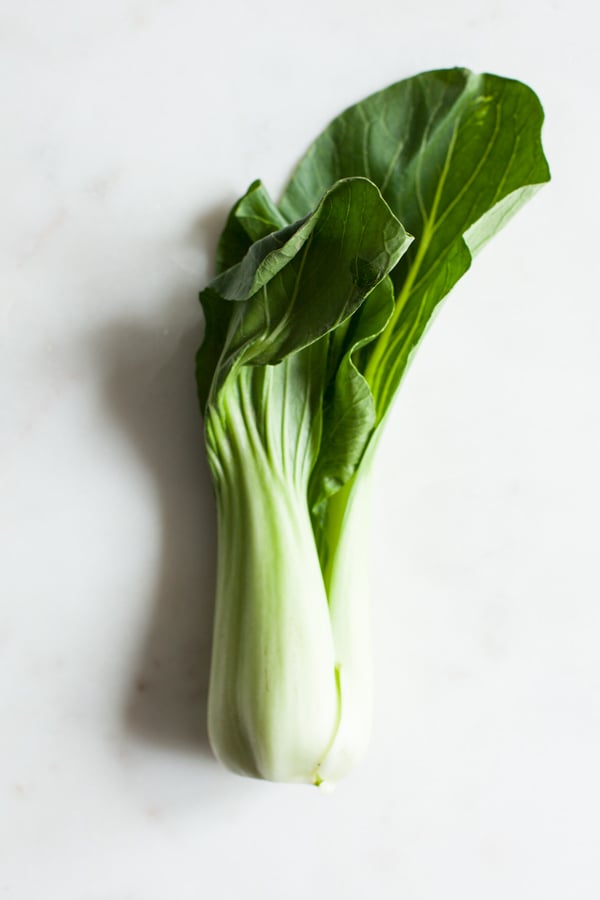
Edamame (10%) + bok choy (15%) = 25%
Make a nutritious soba noodle salad, featuring shelled edamame and chopped bok choy. Or, make a miso broth and load it up with greens and edamame.
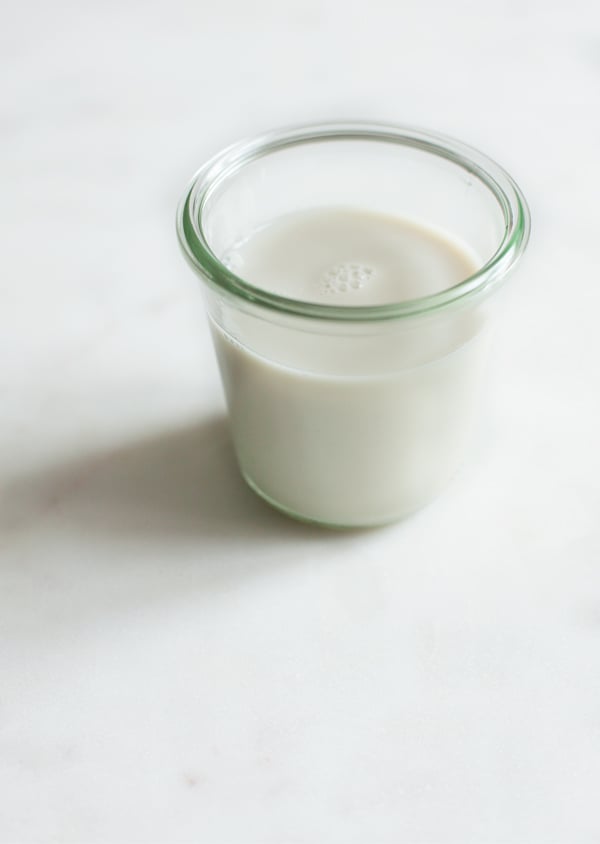
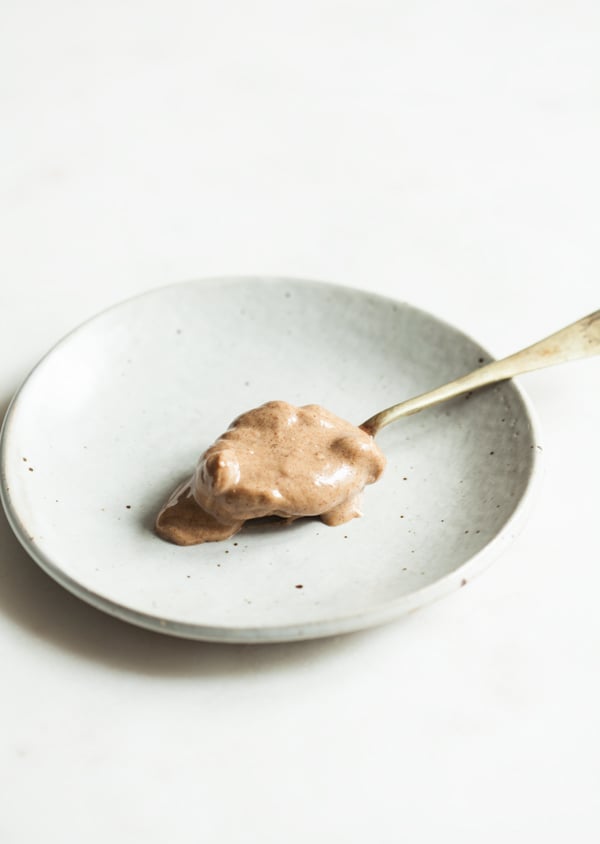
Fortified non-dairy milk (45%) + almond butter (8%) = 53%
Pair these together in a smoothie, or combine them in a bowl of creamy overnight oats.
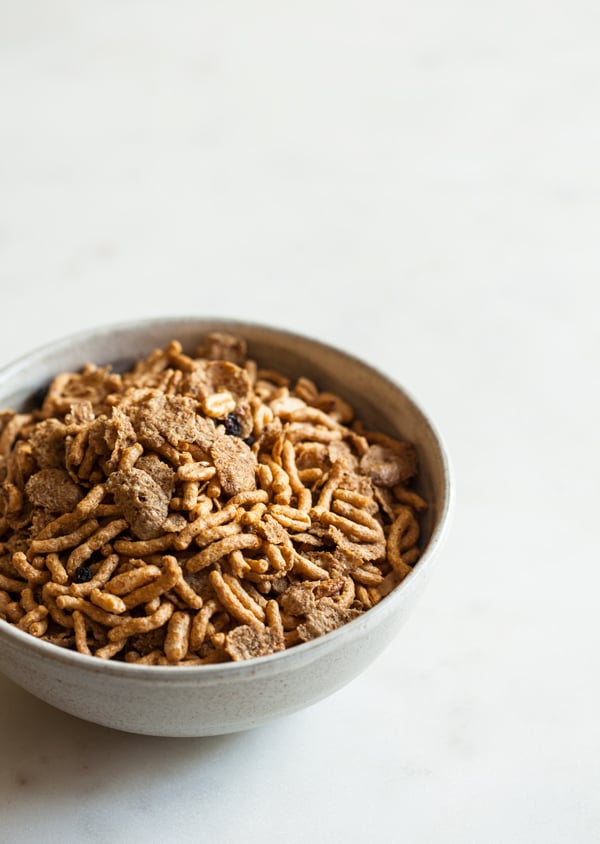

Fortified cereal (25%) + fortified non-dairy milk (45%) = 70%
A quick and easy breakfast!

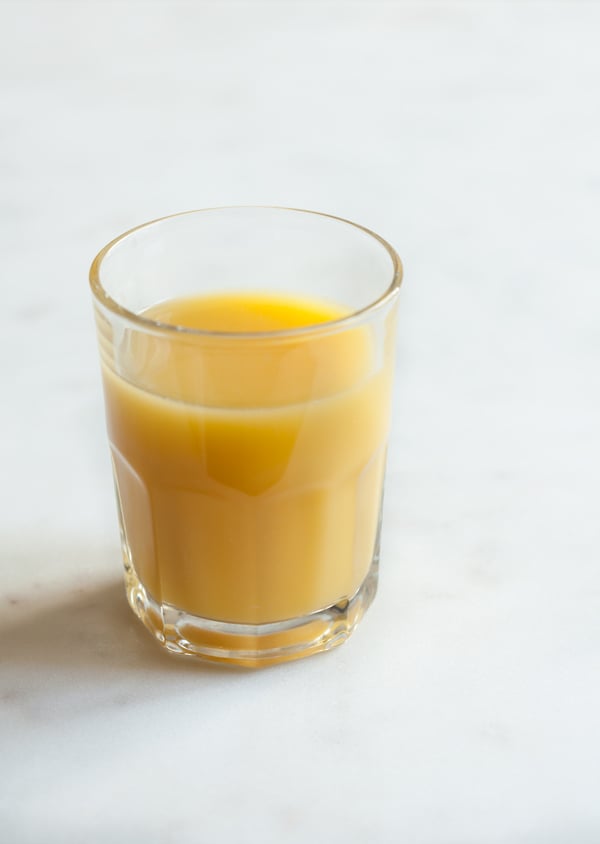
Tofu (15%) + fortified orange juice (35%) = 50%
Combine silken tofu and fortified orange juice in a smoothie or dressing. Or, try having a glass or half glass of fortified orange juice with a tofu scramble breakfast. (NB: whole fruits are a healthier choice than fruit juices, but if calcium acquisition in diet is proving to be a major challenge, the benefits of a glass of OJ might compensate for the fact that it’s less ideal than fresh fruit.)

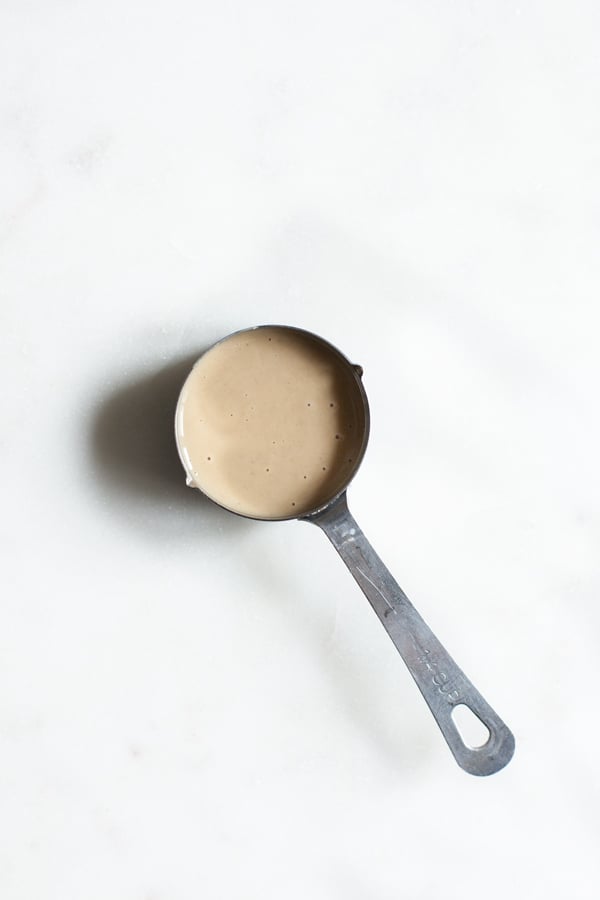
Greens (20%) + tahini (8%) = 28%
Make a big kale salad and smother it in tahini dressing. Or, try making a green and grain skillet dish, then topping it with homemade tahini sauce. Not inspired yet? Then simply combine these two in bowls, bowls, and more bowls.


Tempeh (12%) + tahini (12%) = 24%
To start, you can make a super tasty lunch sandwich with tempeh bacon and tahini sauce. Or you can whip up a tempeh breakfast scramble with tahini drizzle. If all else fails, try a batch of tempeh lunch salad with tahini in the sauce.


Almond butter (8%) + edamame (10%) + broccoli (6%) = 24%
Create an edamame and broccoli stir fry, then top it all with a rich almond butter sauce. Or, try throwing together a fresh broccoli and edamame salad, then savor it along with some almond butter and toast.


Tofu (15%) + almond butter (8%) + orange slices (7%) = 30%
Enjoy a tofu scramble with a creamy almond butter sauce, and serve it for breakfast with a cup of orange slices. Or, make an almond butter and orange dressing, then serve it over a tofu salad or stir fry. If all else fails, make a simple morning smoothie with silken tofu, almond butter, fresh orange slices, and fortified non-dairy milk.


Dried Figs (12%) + Tahini (12%) = 24%
Figs and tahini can be combined in a super creamy and delicious smoothie (perhaps with some banana and non-dairy milk).


Kale (10%) + Almonds (8%) + Edamame (10%) = 28%
You can make a batch of kale and almond pesto, then serve it over pasta, rice, or another grain dish studded with edamame (or stick some edamame in the pesto itself!). You can also make a grilled or raw kale salad and top it with edamame and crushed almonds. Or, try making a kale and edamame stir fry with rice or soba noodles, and then sprinkling it with chopped tamari almonds.
Of course, there are many other ways to enjoy calcium rich plant foods—these are just a few of my favorite suggestions. On Thursday, I’ll be sharing a very simple green and legume dish that provides over 30% of your RDA of calcium in one single serving.
Even if you know have a strong sense of vegan calcium sources and how to cook with them, it can be helpful to keep a couple of general tips and considerations—including factors that influence absorption—in mind. Here are a few general guidelines to help you protect your bones through diet and lifestyle.
Eat a wide array of dark, leafy greens and cruciferous vegetables.
This one doesn’t need much explanation!
Consider fortified, non-dairy milk as a regular calcium source.
I love making homemade almond milk (and other nut milks). But these creamy blends don’t deliver a calcium content that’s in any way comparable to what one gets from a cup of fortified, non-dairy milk. I recommend saving homemade nut milk as a treat (something to warm up and sip after dinner or with tea), and using fortified milks for everyday use, such as morning cereal or porridge, smoothies, and so on.
It’s also worth noting that not all non-dairy milk is fortified with a significant amount of calcium; some brands contain only about 10%. It’s ideal to aim for a brand that contains 35-45% of the RDA. My current favorites are Califia Farms and Silk Almond for almond milk, and Silk and Westsoy Organic Plus for soy milk. The same goes for tofu: if you can find a brand that’s calcium-set, it’s probably a better nutritional investment than one that isn’t.
Think about absorption.
Various factors can influence how much calcium we actually absorb from the foods we eat. Spinach and Swiss chard contain some calcium, but they’re also high in oxalates, which means that the calcium won’t be readily absorbed. Caffeine may have a small impact on calcium absorption, but research suggests that, if a person is consuming enough calcium overall, the effects are likely to be negligible [15].
Vitamin K, which can be obtained through leafy greens like spinach, parsley, kale, and broccoli, also plays a role in maintaining healthy bones [16], though research doesn’t suggest that supplementation isn’t necessary (at least not for bone health).
Eat a varied, balanced diet.
As important as calcium and Vitamin D are, they’re not the whole story when it comes to bone health. Evidence suggests that antioxidant-rich foods can help to protect the bone matrix, which is great news for vegans, since varied plant-based diets tend to be very rich in phytonutrients. Protein also has a protective effect, so it’s a wise idea to make sure that your diet contains plenty of legumes and protein-rich foods. One study of plant-based eaters suggested that merely one serving of meat replacements daily, as well as higher consumption of legumes, offered significant protection for bones [17]. If you’d like some tips on protein-rich food combos, you can revisit this post.
Bone protection goes beyond diet alone.
Weight bearing exercise and activities that strengthen balance are an important part of keeping bones strong and protecting us against falls and accidents as we age. Stay active, and try to vary your physical movement in a way that allows you to focus both on strength and on balance through high- and low-impact exercise.
If you’d like to read more about veganism and bone health, there are a ton of great resources from RDs right here on the web.
Start by reading Ginny Messina’s vegan calcium primer, then check out her posts on vegan diets for healthy bones (which includes good information on absorption) and her post on protein and bone health, which helps to clarify the acid/alkaline hypothesis and its resulting confusion.
Jack Norris has a very comprehensive post on calcium and Vitamin D in vegan diets on his website.
Reed Mangels has a great article on calcium in the vegan diet available at the Vegetarian Resource Group’s website.
Sharon Palmer recently wrote a comprehensive post about vegans and bone health. It features links to research as well as quotations from Ginny, Reed, Ginger Hultin, and Matt Ruscigno.
These links all feature citations that will allow you to do further research on your own, if you wish to.
Nutrient acquisition can feel complicated when you start to consider all of the nuts and bolts. But hopefully this post can help to make the sourcing of calcium in your plant-based diet feel simple and realistic.
If you enjoyed this post and you’d like to see more like it, please let me know! I’d love to hear what nutrition topics or nutrient considerations are on your minds. And I can’t wait to circle back on Thursday with an easy, delicious, and calcium-rich recipe 🙂
xo

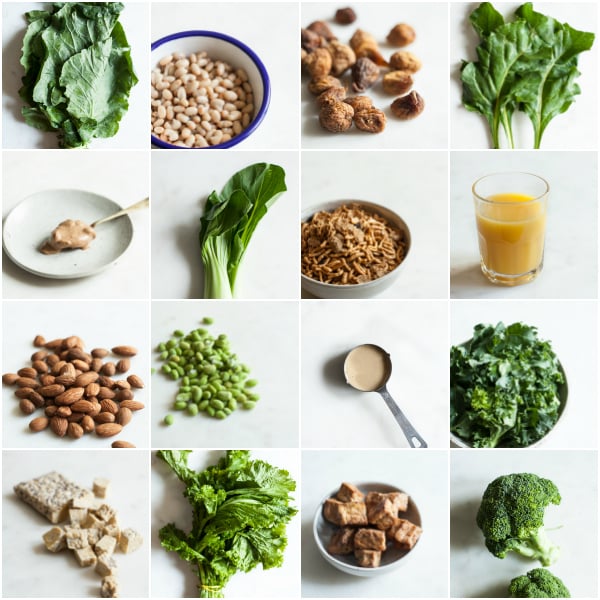
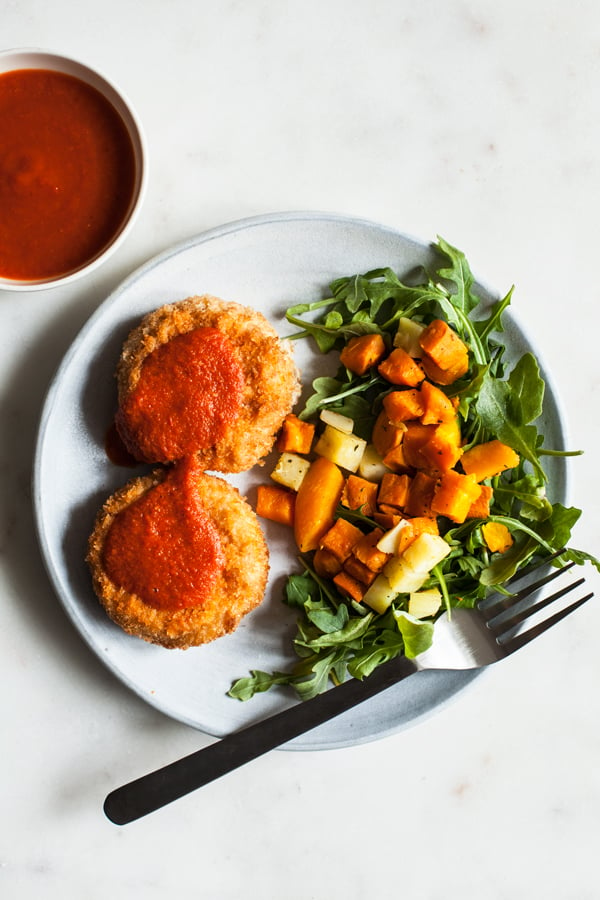
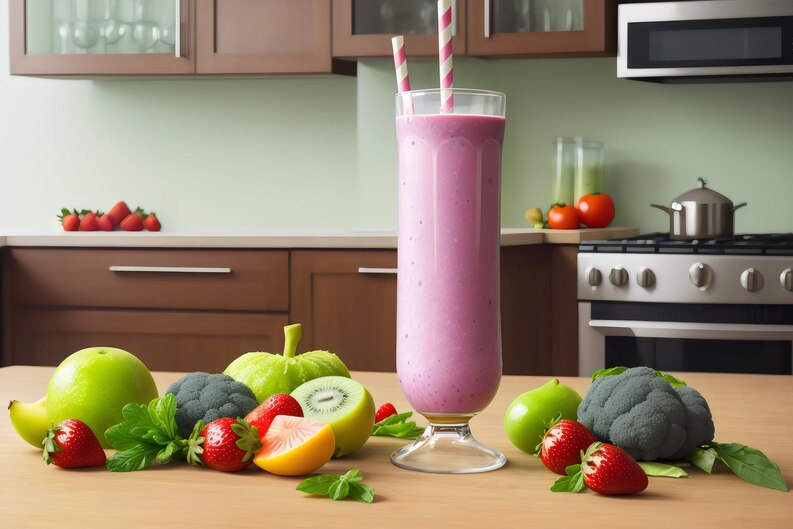

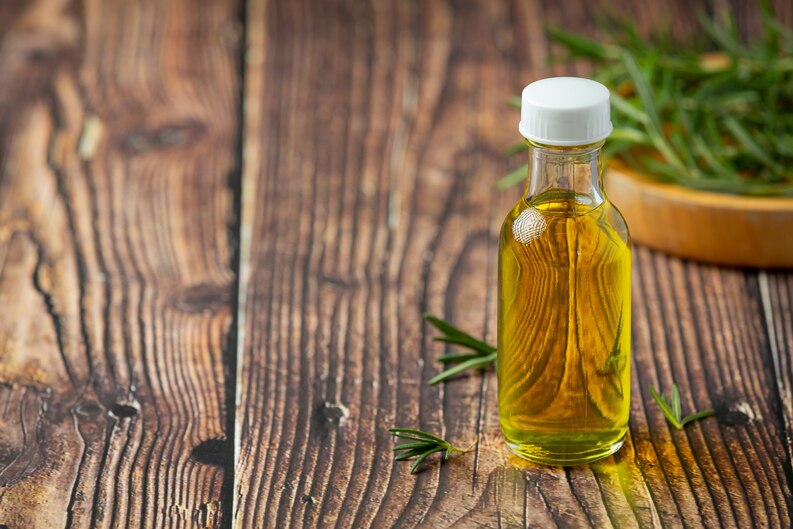
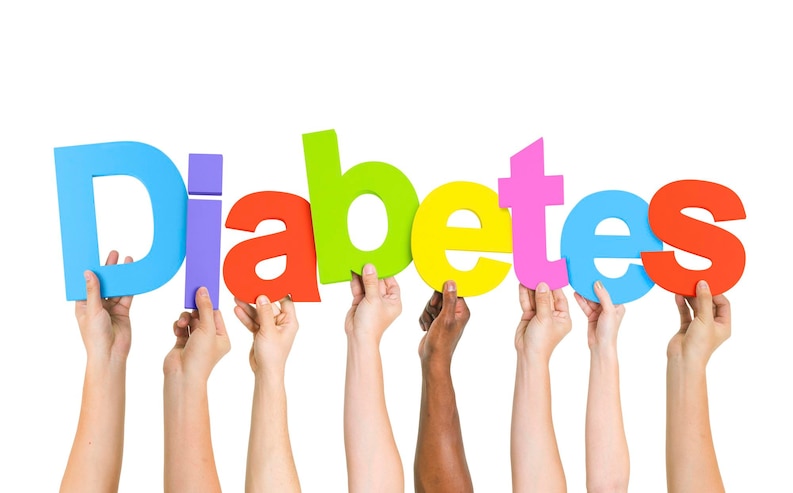
Leave a Reply